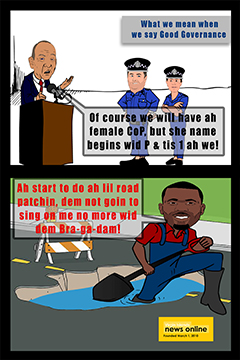La Nina threatening Latin America with hurricanes and droughts, experts say
SANTIAGO, Chile – Latin America and the Caribbean should brace for the arrival of La Nina, the climate pattern seen fueling a highly active hurricane season in the Atlantic and greater climate variability across the region, experts said yesterday.
The World Meteorological Organization organized a webinar on La Nina’s threat as Hurricane Beryl, the 2024 Atlantic season’s first hurricane and the earliest storm on record to reach the Saffir-Simpson Scale’s maximum Category 5 level, was tearing across the eastern Caribbean.
La Nina, a climate pattern that begins with colder-than-normal ocean temperatures in the central and eastern equatorial Pacific, is linked to both floods and drought, as well as an increase in the frequency of hurricanes in the Caribbean.
“Again, now, (we are in) a transition to the La Nina phenomenon,” said Jose Luis Stella, of the Regional Climate Center for Southern South America, warning that La Nina threatens to bring “rapid variability” to an already extreme climate.
The experts on Tuesday said that La Nina could cause a repeat of historic droughts in South America similar to those recorded between 2020 and 2023.
“We just went through three years with a fairly prolonged La Nina event that brought … historic droughts, with great impact and then a fairly rapid transition to El Nino,” said Stella.
In Latin America, both La Nina and El Nino, which involves a warming of the tropical Pacific Ocean’s surface and can affect jet stream winds above the Pacific, have had costly impacts on regional economies by hurting crops like wheat, rice and corn.
Both patterns tend to last between nine and 12 months, and usually occur every two to seven years, although they do not have a regular calendar.



.png)


_(3).png)












_(3).png)



















.png)




Leave a Reply